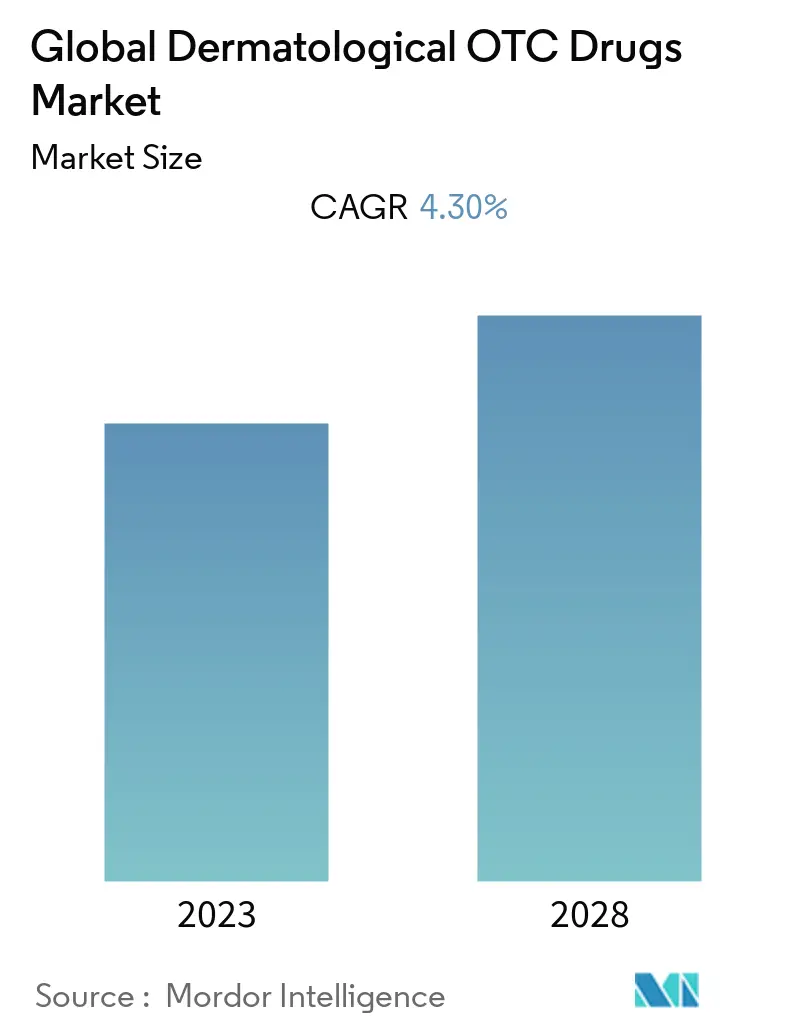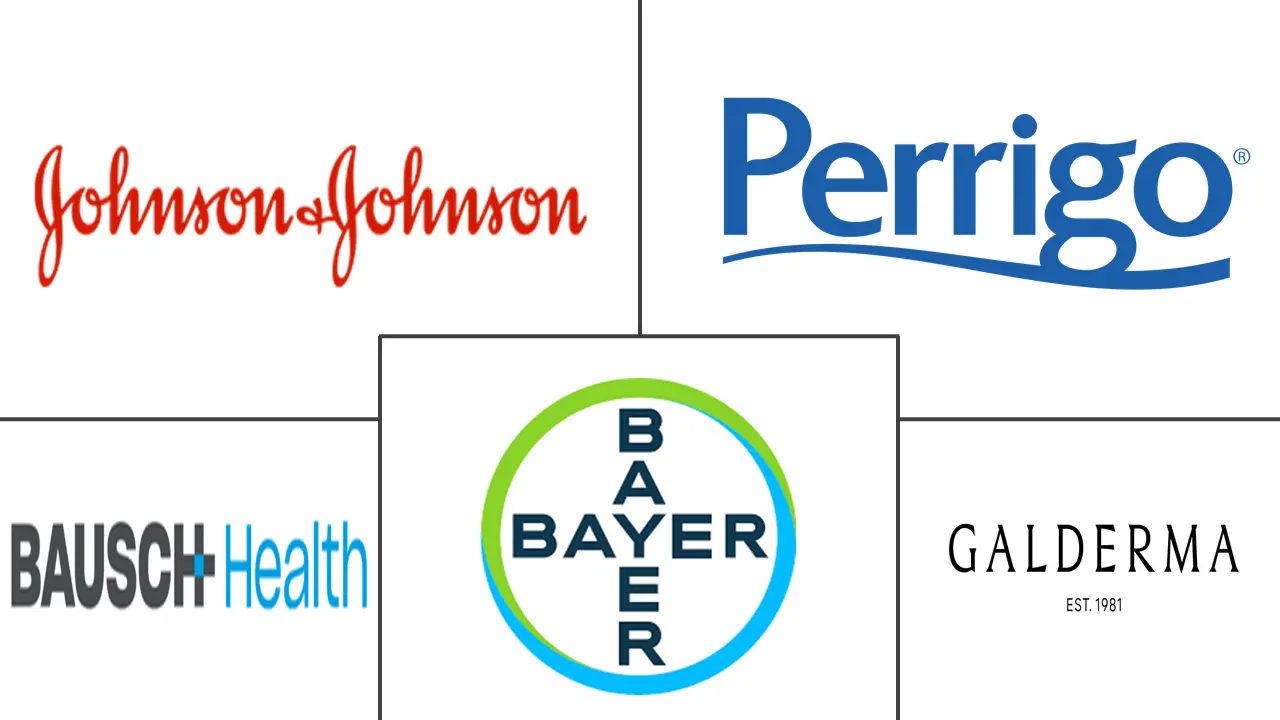Market Size of Global Dermatological OTC Drugs Industry

| Study Period | 2018 - 2028 |
| Base Year For Estimation | 2021 |
| Forecast Data Period | 2024 - 2028 |
| CAGR | 4.30 % |
| Fastest Growing Market | Asia-Pacific |
| Largest Market | North America |
Major Players
*Disclaimer: Major Players sorted in no particular order |
Need a report that reflects how COVID-19 has impacted this market and its growth?
Dermatological Otc Drugs Market Analysis
The dermatological over-the-counter (OTC) drugs market is expected to register a CAGR of nearly 4.3% over the forecast period of 2022-2027.
The COVID-19 pandemic had an impact on the studied market due to the pandemic. There were lockdown restrictions owing to which not only footfall in the hospitals and clinics reduced for medical conditions other than COVID-19 but also, the restrictions affected the diagnostics and pharmaceutical supply chain, which had its impact on the market. However, some studies reported that COVID-19 might be responsible for some dermatological conditions, which may have a positive impact on the studied market. For instance, according to the research study published in January 2021 by Genovese G. et al., during the pandemic, COVID-19-associated cutaneous manifestations have been increasingly reported, and some of the manifestations include urticarial rash, confluent erythematous/maculopapular/morbilliform rash and others. Further, with the onset of telemedicine, decreasing severity of the virus, and large-scale vaccination programs around the world, the studied market is expected to reach its full potential over the coming years.
The major factor driving the growth of the studied market is the rising prevalence of skin-related diseases such as acne, dermatitis, fungal infections, and others. For instance, according to the research study published by Carsten Flohr and R. Hay in February 2021, skin diseases are the fourth most common cause of all human diseases, which affects approximately one-third of the global population. Dermatological OTC drugs are gaining traction around the world due to increasing out-of-pocket healthcare costs from prescription drugs, OTC drugs are not only cheaper than prescribed drugs, but also they are easily available and do not need any medical consultation. Thus, they offer a better alternative where they do not need a doctor’s prescription and can easily get the medicines at a lower cost. Further, according to the research study published in March 2019, titled “Skin diseases are more common than we think,” of the total participants in the study, about 64.5% had at least one skin abnormality, of which the most diagnosed ones were actinic keratosis (26.6%), rosacea (25.5%), and eczema (11.7%). Also, as per the same source, the prevalence of skin diseases increased with age and was more common in men as compared to women. Hence, due to the high burden of skin diseases, the demand for drugs is expected to increase. OTC drugs will be sought because of their easy availability and low cost as compared to prescription drugs, and the market will grow.
Furthermore, many skin diseases are age-associated, and their prevalence is found to be higher in the older population. And with the growing global geriatric population, the burden of skin diseases is further expected to increase globally, which will also augment the growth of the dermatological OTC drugs market. For instance, according to the World Population Ageing Highlight Report of 2020 published by the United Nations, the global geriatric population is expected to increase double fold from 727 million in 2020 to 1.5 billion by 2050. However, side effects associated with the OTC drugs and the availability of duplicate drugs in the market are expected to impede the growth of the dermatological OTC drugs market during the forecast period of the study.
